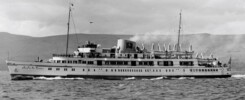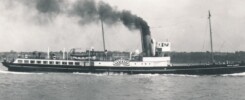Not all paddle steamers were built with cooking facilities for crew or passengers. Those running short trips starting and finishing their days at the same place didn’t really need them. Examples of this include the Dart paddlers like Kingswear Castle which had (and still has) a Windermere steam powered kettle for making hot drinks and a servery for selling light refreshments but no cooking facilities for any hot meals. On paddle steamers running longer trips galleys were usually fitted but they were always tiny in floor space and designed to serve a dining saloon capacity which could seat generally only about 10% of the full passenger complement.
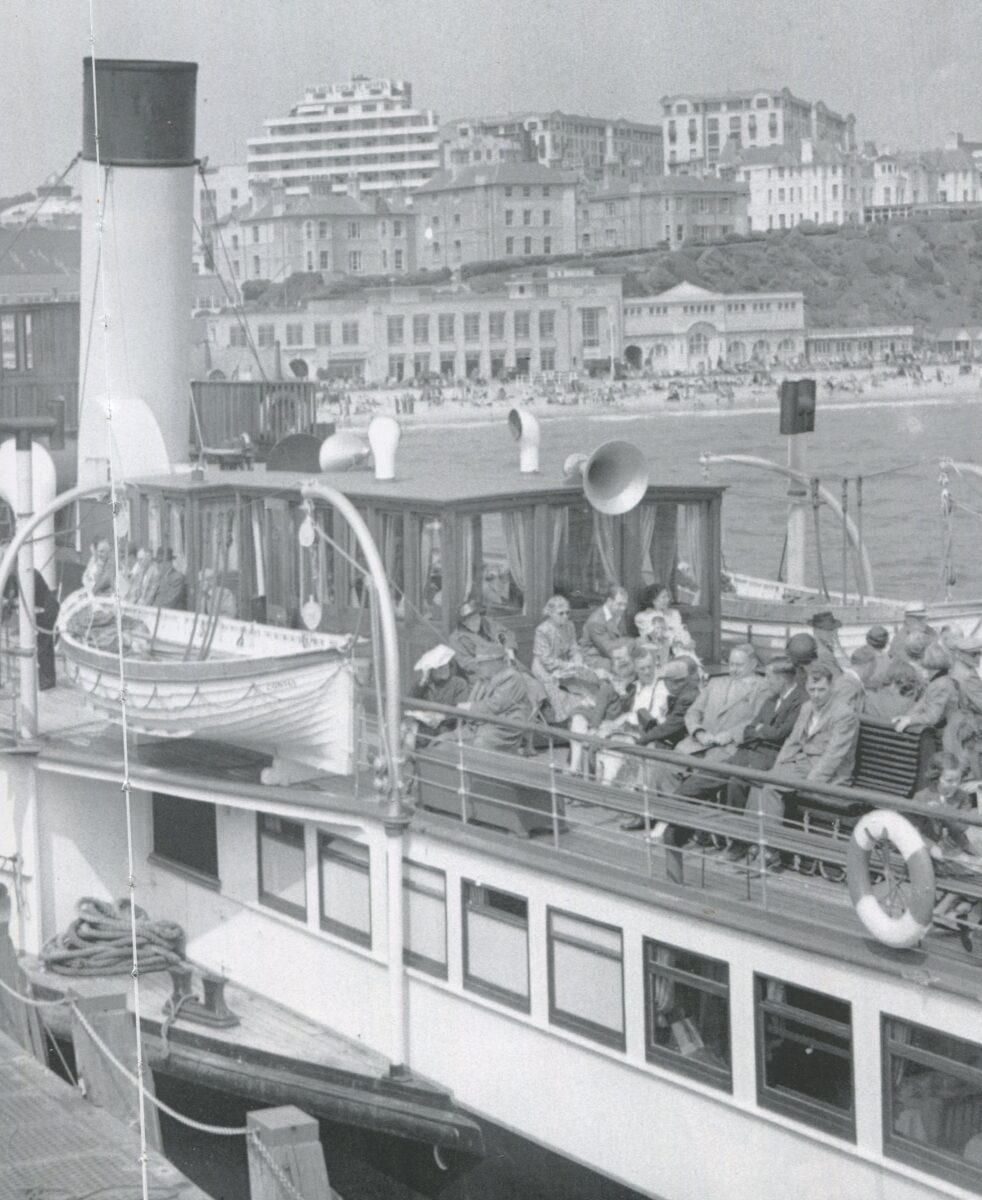
When Consul was rebuilt after the war and returned to service in 1949 she sported two galley chimneys to take the products of combustion up to atmosphere from her two coal-fired ranges abaft the paddle boxes one each side. As you can see in this picture they were given H tops which helped draw a draught up from the ranges. Hot air rises. By diverting it two ways and then providing an opening beneath each of these exits that, in theory at least, sucked extra air in through convection and so doubled the draught taking the smoke upwards.
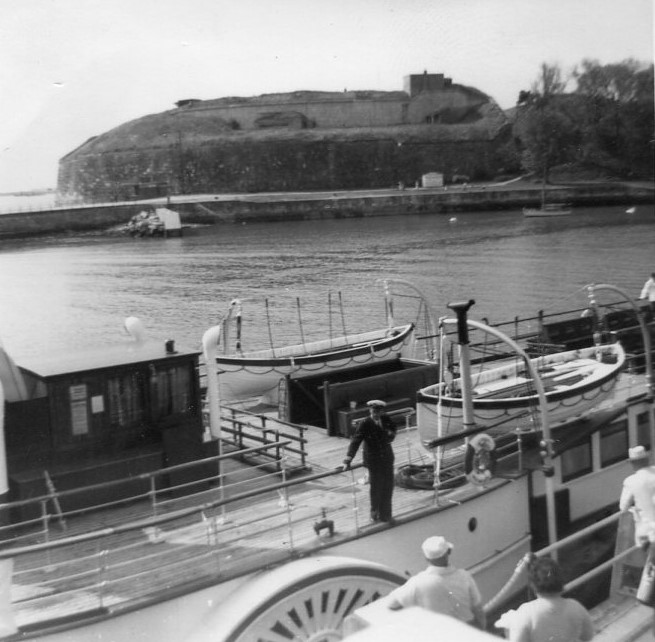
However hot products of combustion from a coal fired range are corrosive and by 1962, only thirteen years after being put on, the H tops of Consul’s two chimneys were falling apart. So the starboard one was removed completely and the top of the port one replaced with a simpler non H topped arrangement.
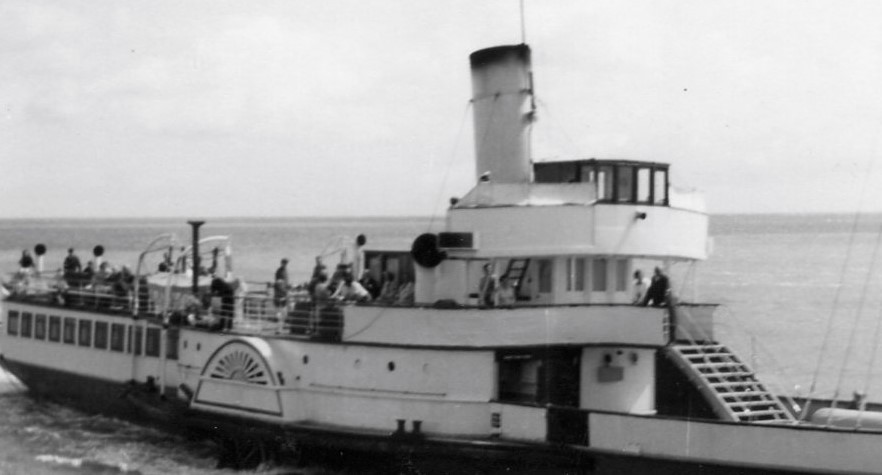
When Consul left Weymouth for slipping at Poole before the 1963 season, now in the ownership of Tony McGinnity’s South Coast and Continental Steamers Ltd, the same arrangement was in place but in Poole the chimney on the port side was moved across to re-activate the range on the starboard side as you can see in this picture. Why did they do that? Why spend money when you don’t need to particularly when finances are tight as they were back then in spades.
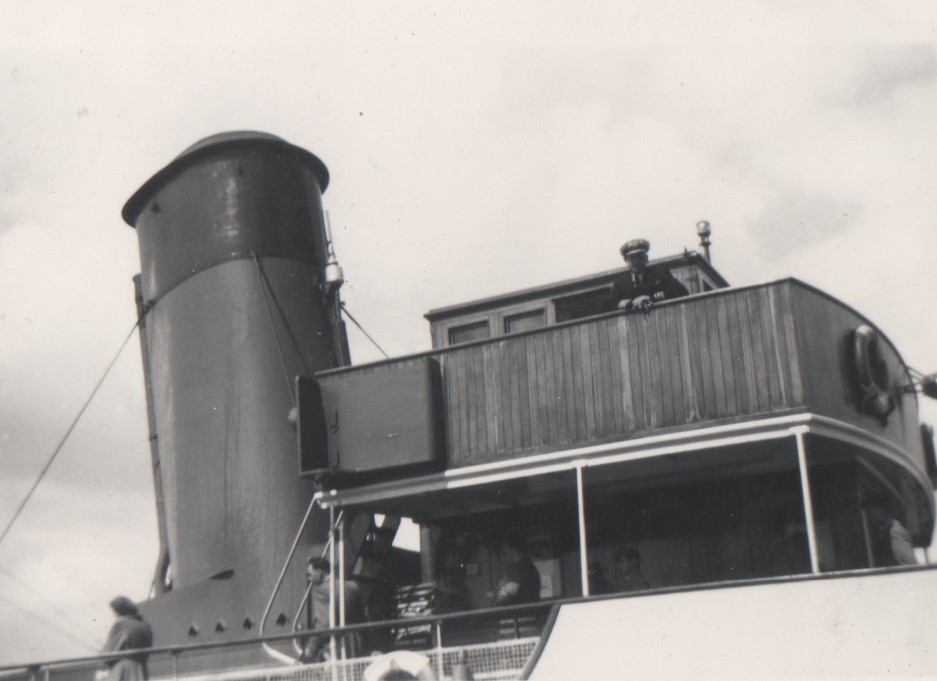
Red Funnel had their own way of exhausting the gases from their galley ranges to atmosphere and this was done by routing them into the space between the inner and outer funnels. That journey upwards was assisted by a natural draught sucked into this space created by cutting diamond shapes around the bases of the funnels to draw air in as can be seen here on Bournemouth Queen.
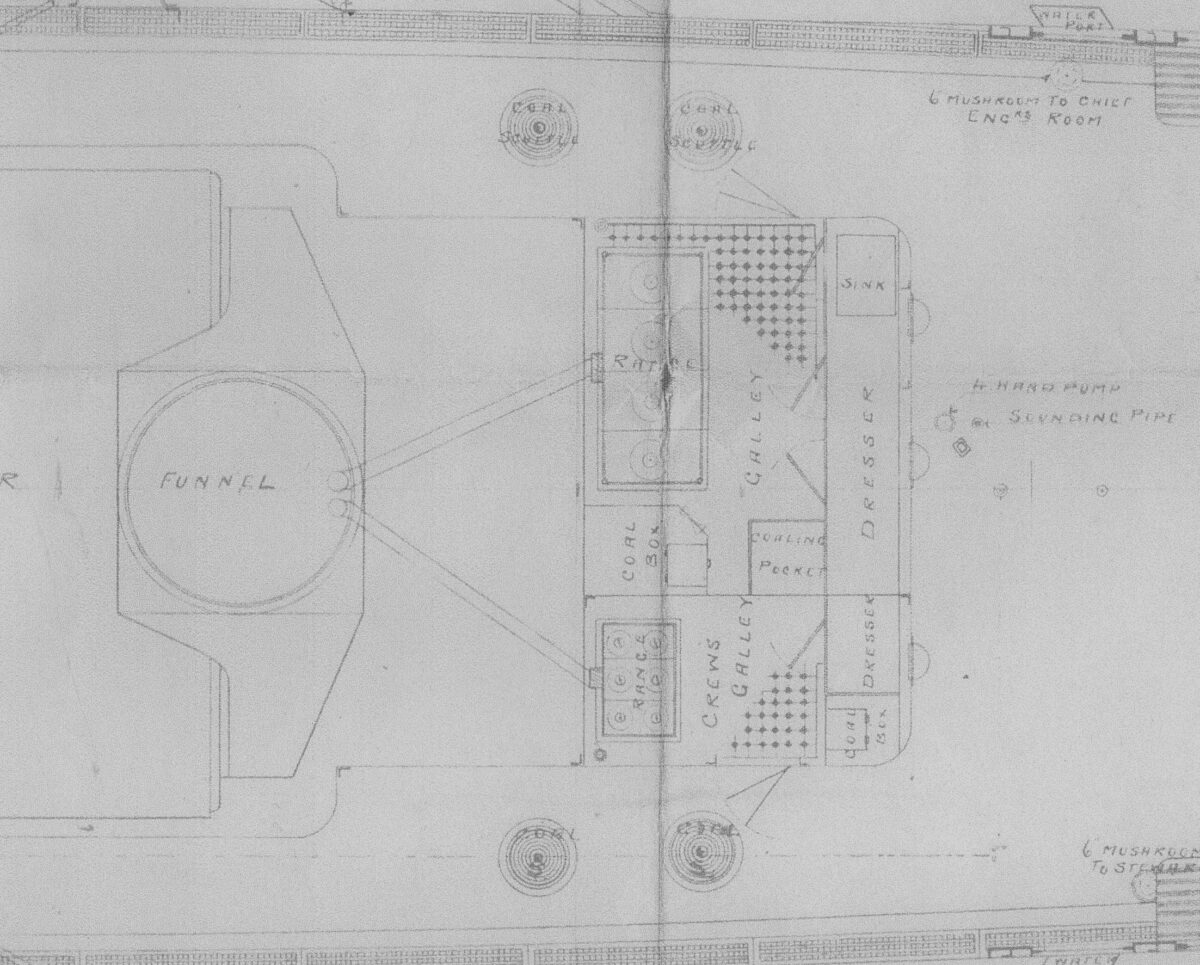
Bournemouth Queen’s main and crew galleys were forward of the boiler space (in the same position as on Medway Queen). You can see in this plan the route of the flues from the two ranges up into the space inside the funnel.
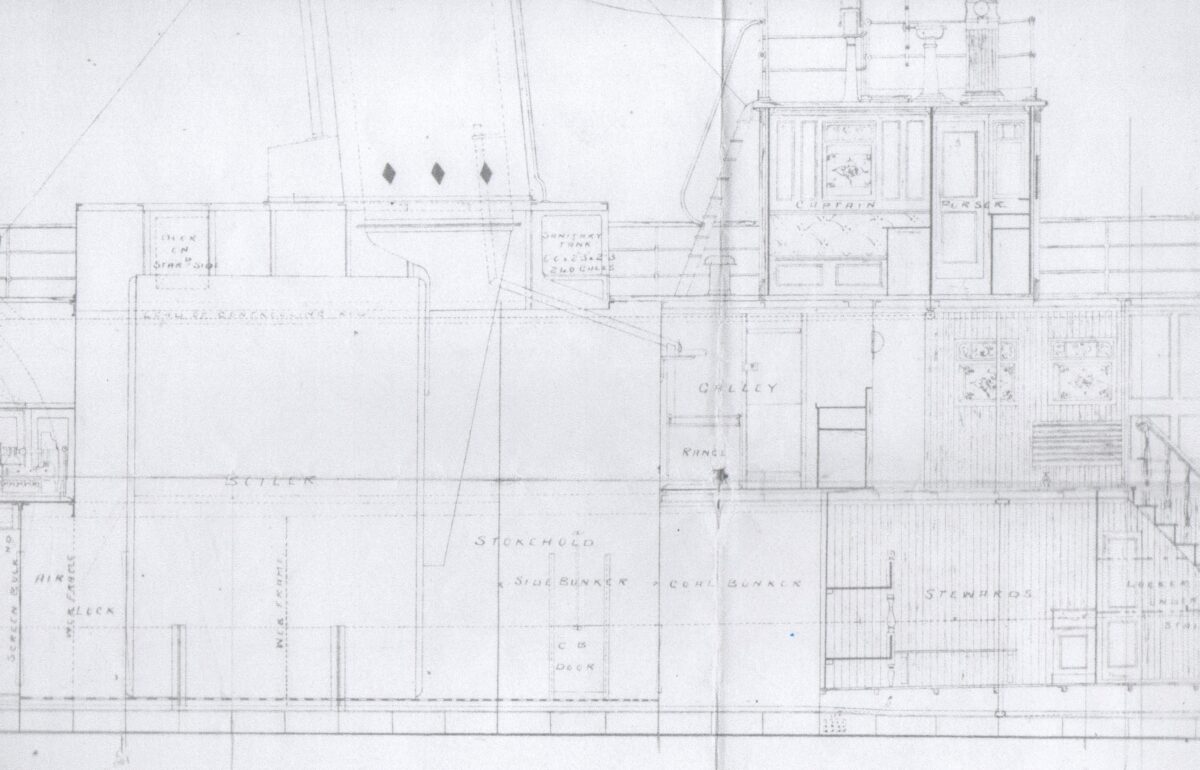
The galley flues don’t go very far up the funnel hence the need for the natural draught created by the diamond shapes.
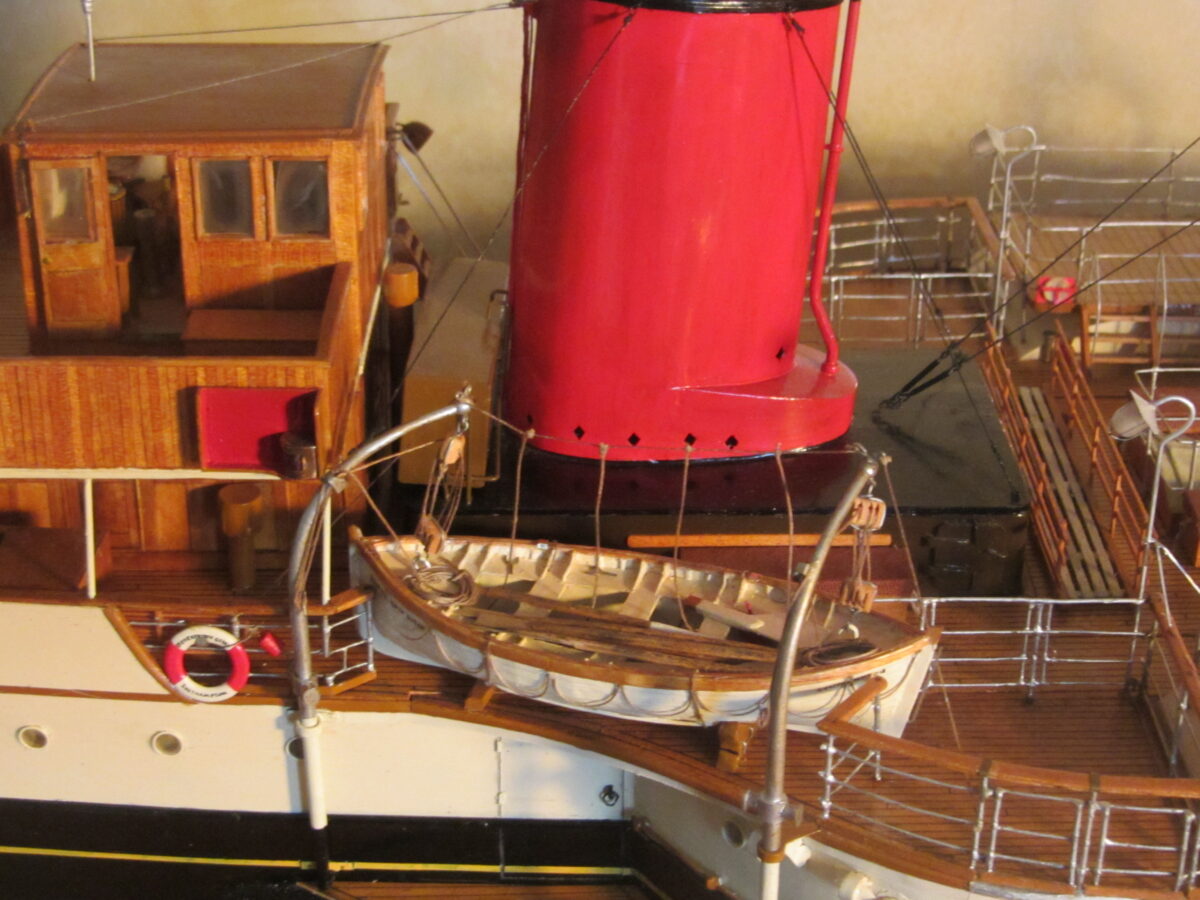
Here you can see the diamond shapes cut in the funnel of Don Jones’s superb model of Bournemouth Queen.
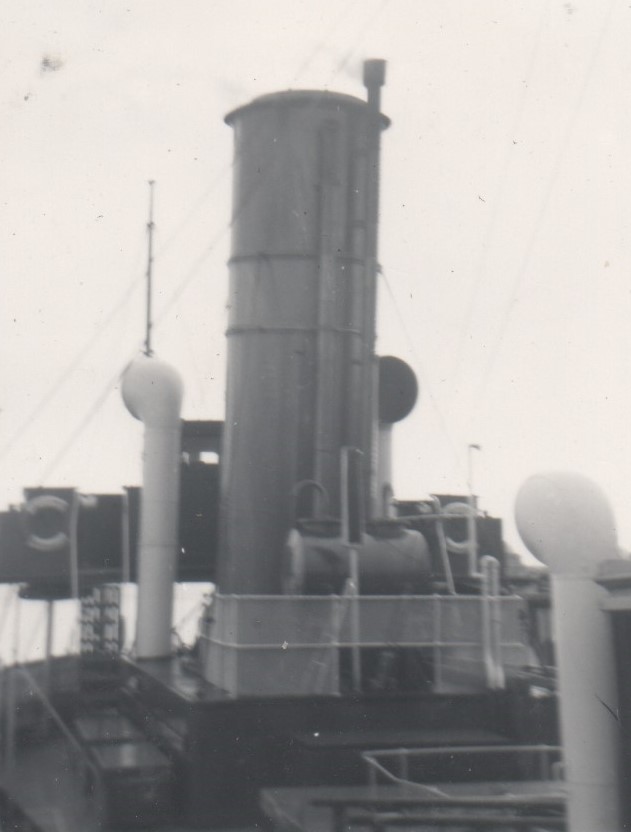
Princess Elizabeth had her small galley on the starboard side of the sponson forward of the paddle box and, as on Bournemouth Queen, its flue was also routed into the space between inner and outer funnels. However during the refit prior to her 1958 season, when she was being prepared to resume excursion sailings within the Solent on the routes of Bournemouth Queen which had been withdrawn, the flue was found to be so wasted away that it had to be replaced. Instead of renewing like for like the new flue was routed outside the funnel next to the exhaust steam pipe as can be clearly seen in this picture. This arrangement didn’t last long and was removed prior to the Lizzie’s first season in her new life at Torquay in 1960.
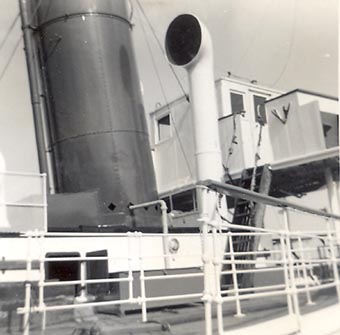
In this shot taken in the spring of 1962 prior to her season at Bournemouth you can see the diamonds cut into the base of Princess Elizabeth’s funnel.
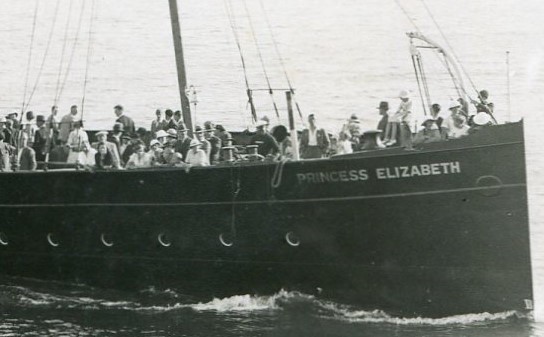
In her Red Funnel days the Lizzie also had a coal-fired range for the crew in the forecastle both to help keep them warm for winter work on the Southampton/Cowes ferry service and also to enable them to boil a kettle. You can see its chimney between the mast and the bow.
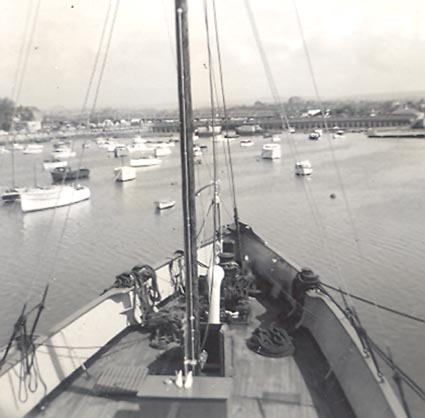
This chimney and its coal-fired range in the forecastle were removed in 1960 and replaced with a two ring gas burner with the gas stored in the box you can see which was fitted for it on deck just abaft the mast. In this pic the box has the additional purpose of providing a platform to dry out the greaser’s shoes which had got wet from the leaky deckhead above them in the forecastle.
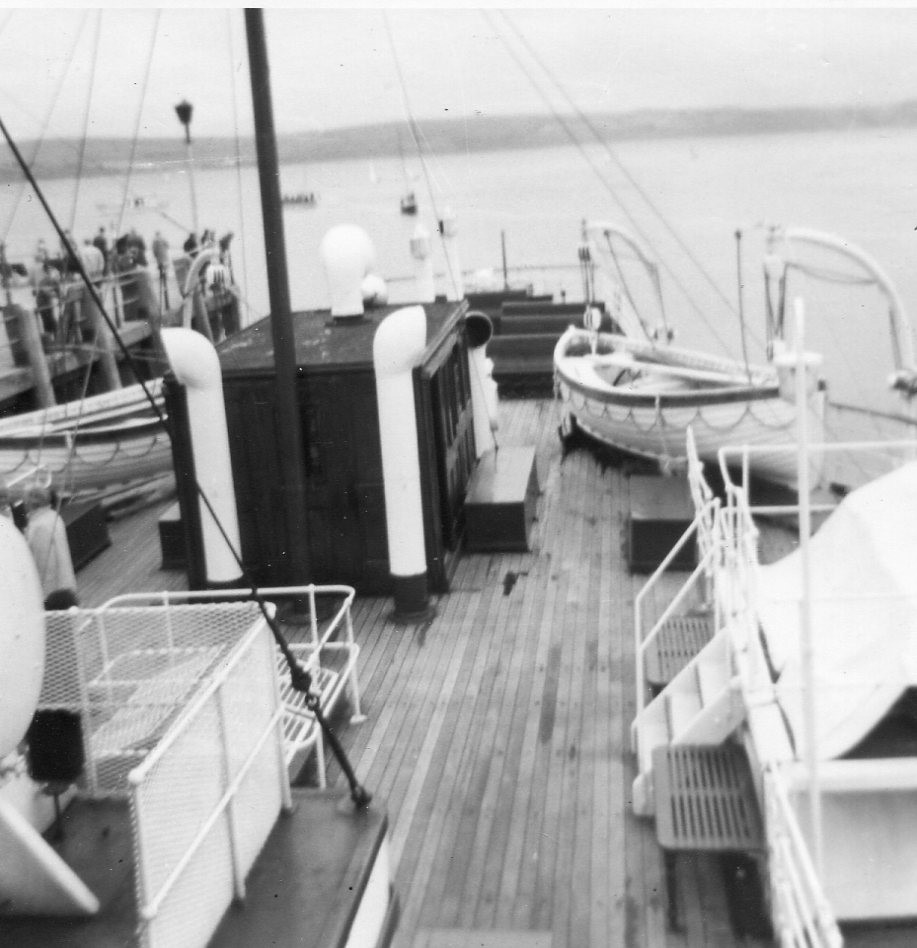
In the period I got to know Princess Elzabeth well when she was running from Weymouth from 1963 to 1965 the crew were not fed. Mr Lloyd Worth who ran the catering on a licence from Cdr Rhodes served only hot and cold drinks together with light refreshments which included crisps and sandwiches for the passengers.
In any case most of the crew in that era lived ashore in Weymouth and went home for their suppers and to their own beds every night. I recall Capt Holleyoak in 1963 marching up the harbour and taking the 22 bus to his home in Wyke Regis every evening in the 5pm – 7.30pm gap between the afternoon and evening cruises to eat his supper cooked by his wife Eva. Capt Defrates did the same in 1964 returning to his flat in St Albans Street where Mrs Defrates had something hot for him on the go before coming back down to the ship for the evening cruise. And in 1965 Capt Woods, who lived in Southampton, walked up into town to buy his dinner at one of the many eateries along Weymouth’s seafront. He was not keen on sleeping aboard either so unless there was a very early start the next morning he was first up the gangway when the Lizze got back from her evening cruises to make his way speed walking along the prom to the railway station to take the train back to his own bed in Southampton most nights. I remember him saying that on the rare occasions that he did he sleep aboard he always woke up with a headache.
And so it continues today. Of the 1,000 or so domestic passenger vessels still running in the UK hardly any have any crew accommodation and hardly any provide any food for their crews either beyond tea, coffee and bottled water. There are exceptions like CalMac, subsidised by the Scottish Government, which provides a full hotel service for its crews on it larger vessels. But Red Funnel, Wightlink and Western Ferries don’t. All of their crews are expected to live ashore within easy commuting distance of the ships. And so it goes on aboard the overwhelming majority of the UK’s domestic passenger vessel fleet. The crews live ashore. They come to work in the morning. They go home at night. And for most if they want to eat aboard then they bring their own sandwiches with them. And that is a major financial saving for the operators as feeding a crew with hot meals and accommodating them aboard a ship overnight comes with costs and isn’t cheap.
Tiny Point of Detail 1: Bournemouth Queen had three captains in her post war guise, Capt Field from after the war up to the end of the 1955 season, Capt Kinch in 1956 and Capt Jones for her final season in 1957. He joined her on 17th June at the start of the season, signed off on 30th August and was her only master that summer. In common with most seasonal businesses back then, and many still today, key personnel were not generally allowed to take time off for any holidays during the season.
Tiny Point of Detail 2: Capt Jones recorded that during the 1957 season there were some written complaints made to Red Funnel’s Head Office in Bugle Street about smuts or cinders falling from Bournemouth Queen’s funnel onto the foredeck when the ship had a following wind. In response Capt Jones noted that “it was light ash which did not burn or stain clothes”.
Tiny Point of Detail 3: For 1958 Capt Jones moved to Princess Elizabeth which for that season only took over Bournemouth Queen’s excursion roster within the Solent and so he became not only the last master of Bournemouth Queen but Red Funnel’s last master of Princess Elizabeth as well. And when the latter was bought by Cdr Edmund Rhodes in 1959 he tried to recruit Capt Jones to come with his ship for his proposed new services from Torquay. Wisely, as it turned out, Capt Jones opted to remain as a master in Red Funnel’s employ.
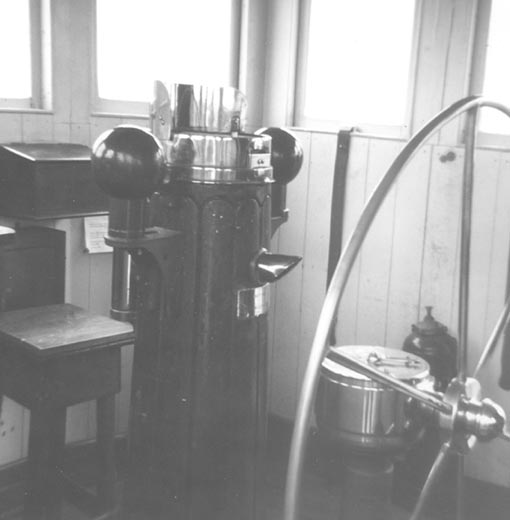
With thanks to Don Jones for several of the pictures, the plans of Bournemouth Queen and other input about Red Funnel. As the son of Capt Jones he was afloat quite a lot in his childhood and learned to steer as a boy aboard Bournemouth Queen and Princess Elizabeth.
Kingswear Castle returned to service in 2023 after the first part of a major rebuild which is designed to set her up for the next 25 years running on the River Dart. The Paddle Steamer Kingswear Castle Trust is now fund raising for the second phase of the rebuild. You can read more about the rebuilds and how you can help if you can here.
John Megoran

